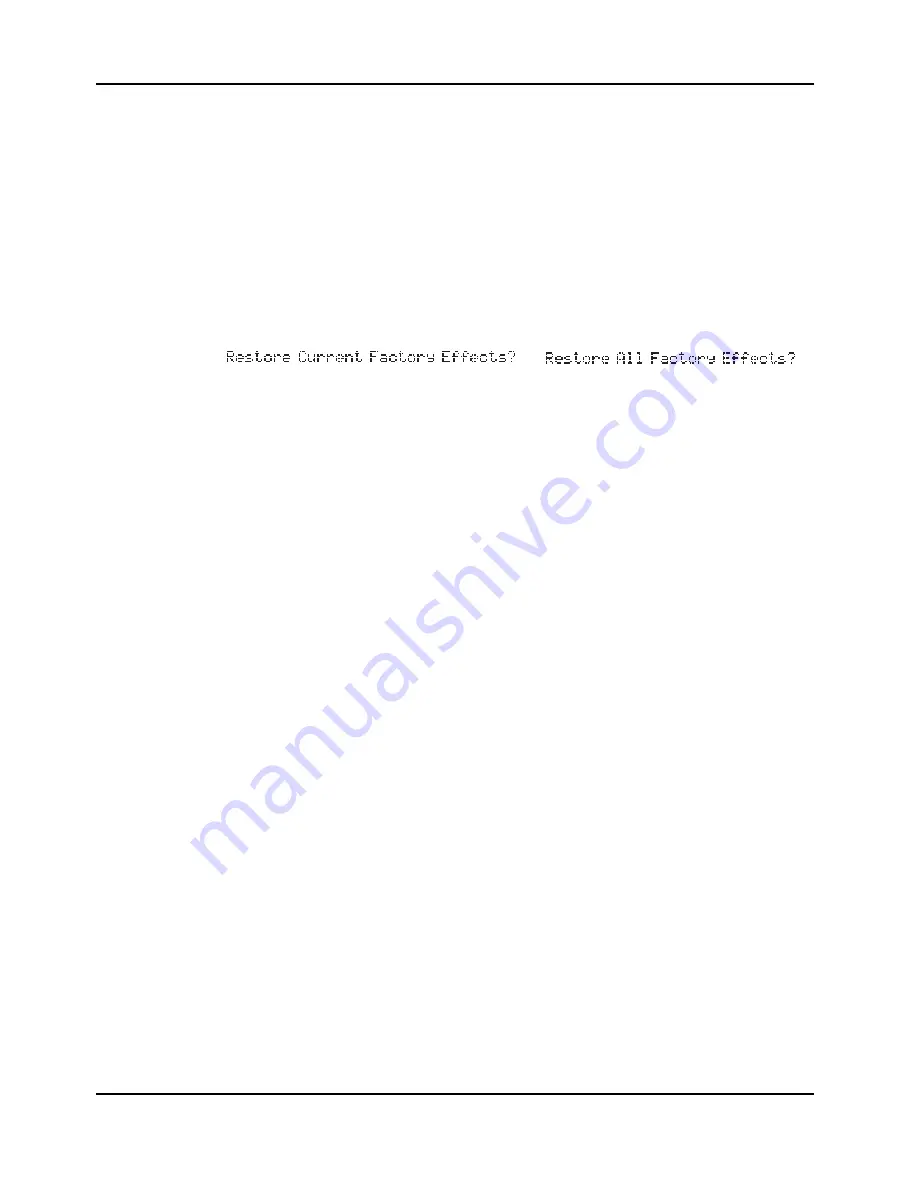
Programming your PC1
Basic Editing Concepts
4-4
Other Save-Dialog Functions
Restoring Factory Effects
If you’ve changed the effect settings associated with a factory program, you can quickly restore
the factory settings. In the Save dialogs for programs and effects, there are options for restoring
the effects for either the current program, or for all programs.
1.
Enter the Save dialog by pressing the
Store
(
Edit
)
bu
tton twice or the
Effect
and
Store
buttons. Depending on the edit mode you’re in, you’ll see either a prompt to replace the
current effect, or to save or replace the current program.
2.
Press the
Left
cursor button repeatedly until you see either
or
3.
Press
Yes
to restore, or
No
to cancel.
If you choose to restore the current effect, the PC1 resets only the current program to its factory
effect settings. If you choose to restore
all
effects, the PC1 resets all programs to their factory
effect settings.
Deleting Objects
You can delete user-defined programs, setups, or effects by entering the Save dialog for the
Program Editor, or Setup Editor—or in the Save dialog for Effects edit mode.
When you enter the Save dialog, you’ll see a prompt asking you whether you want to save or
replace an object (the object type depends on which edit mode you’re in). The prompt for
dumping the object is at another location in the dialog, as you’ll see.
1.
Enter the Save dialog by pressing the
Store
bu
tton twice or the
Effect
and
Store
buttons.
Depending on the edit mode you’re in, you’ll see either a prompt to replace the current
effect, or to save or replace the current program or setup.
2.
Press the
Right
cursor button repeatedly until you see a prompt asking you to delete the
object.
3.
Press
Yes
. The display will show another prompt asking you if you’re sure.
4.
Press
Yes
again. The display will show
Deleted!
briefly, then return to the
performance mode you were in before entering the edit mode. You’ll also see
–
Not
Found--
in the display, indicating that the object is gone.
At any of these prompts, you can press
No
to cancel the operation.
Dumping Objects
If you’ve created a lot of programs, setups, and effects settings, you may want to store them
externally, using a MIDI System Exclusive (SysEx) dump. This has several benefits: you can load
the objects into another PC1 or PC2/X/R that accepts SysEx; you can preserve them in a more
permanent backup archive (in case anything happens to the PC1’s battery-backed memory), and
you can create libraries of objects customized for particular performance or recording situations.
You can dump objects to any MIDI recording device that accepts SysEx messages; most MIDI
sequencers manufactured today accept SysEx. A SysEx dump can consist of a single object of any
type, or all objects of a given type—it can also include
all
user-defined objects. You can initiate






























